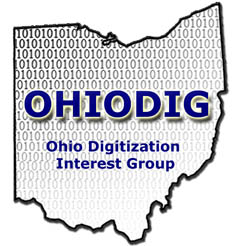RESOURCES – TABLE OF CONTENTS
ASSESSMENT/ANALYTICS
Survey data from annual analytics survey of digital collections across Ohio, 2014-2019.
DIGITIZATION AND DIGITAL PROJECTS RESOURCES
Links to resources from general to specific, including standards, copyright, assessment, preservation, and promotion.
GRANTS IN OHIO
List of grant programs that provide funds to Ohio libraries, archives, and cultural heritage organizations to support collection digitization and online discoverability of digital collections. (Last updated 2023.)
OHIO DIGITIZATION REGISTRY PROJECT (2020)
Reports and resources from 2020 survey of cultural heritage institutions in the state as to the level of institutional involvement and interest in digitization, digital collections, and digital preservation work.
OHIODIG VIRTUAL TOURS
Virtual tours of Ohio Libraries, Archives, and Museums include photo slideshows, video tours, entries in Google Arts and Culture, recorded presentations, and more. (Last updated 2021.)
last updated: 2024-03-08 || URL: https://www.ohiodig.org/resources || maintained by: Brenda Foster & Marsha Miles || questions or comments: ohiodigroup@gmail.com
